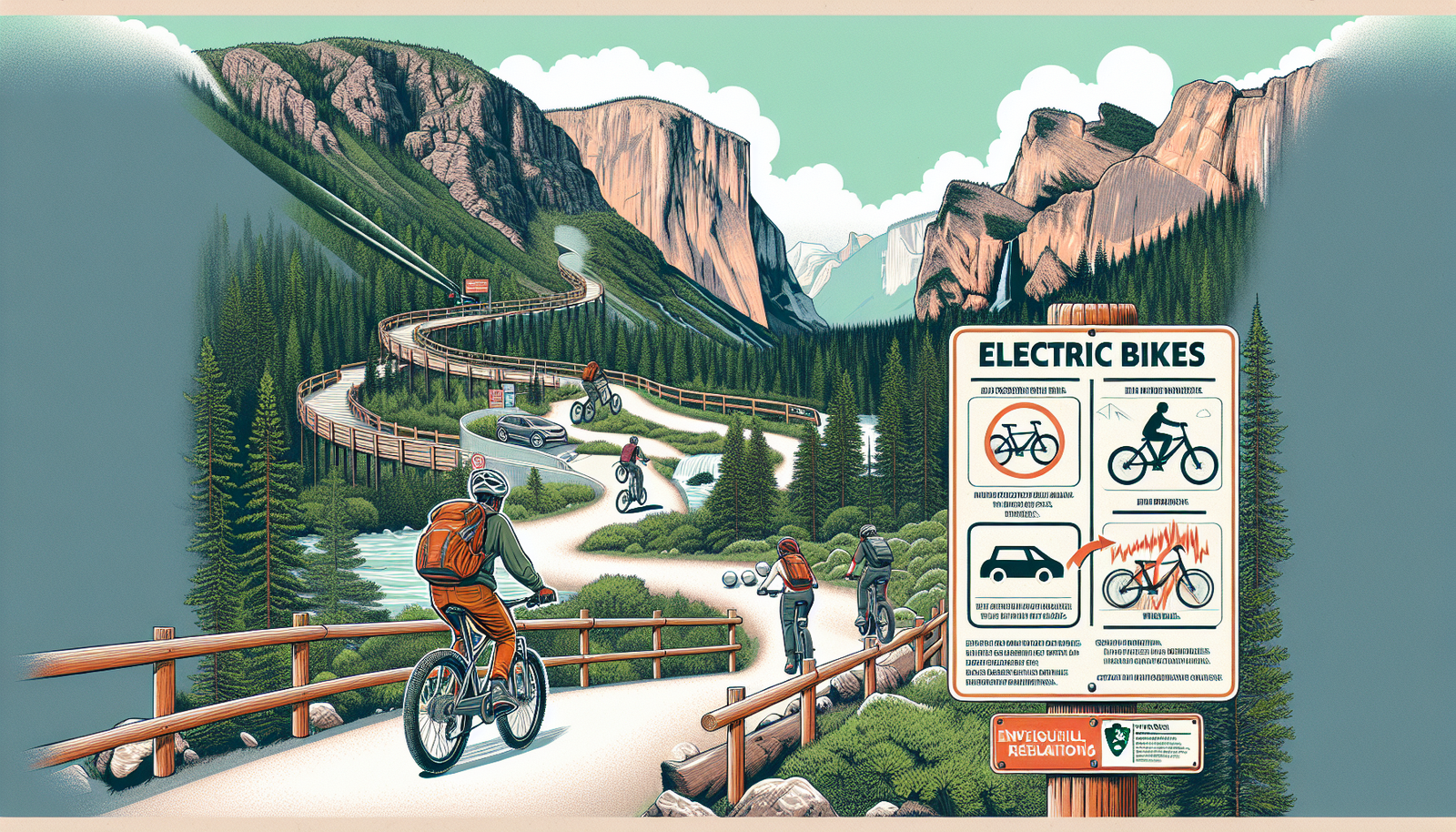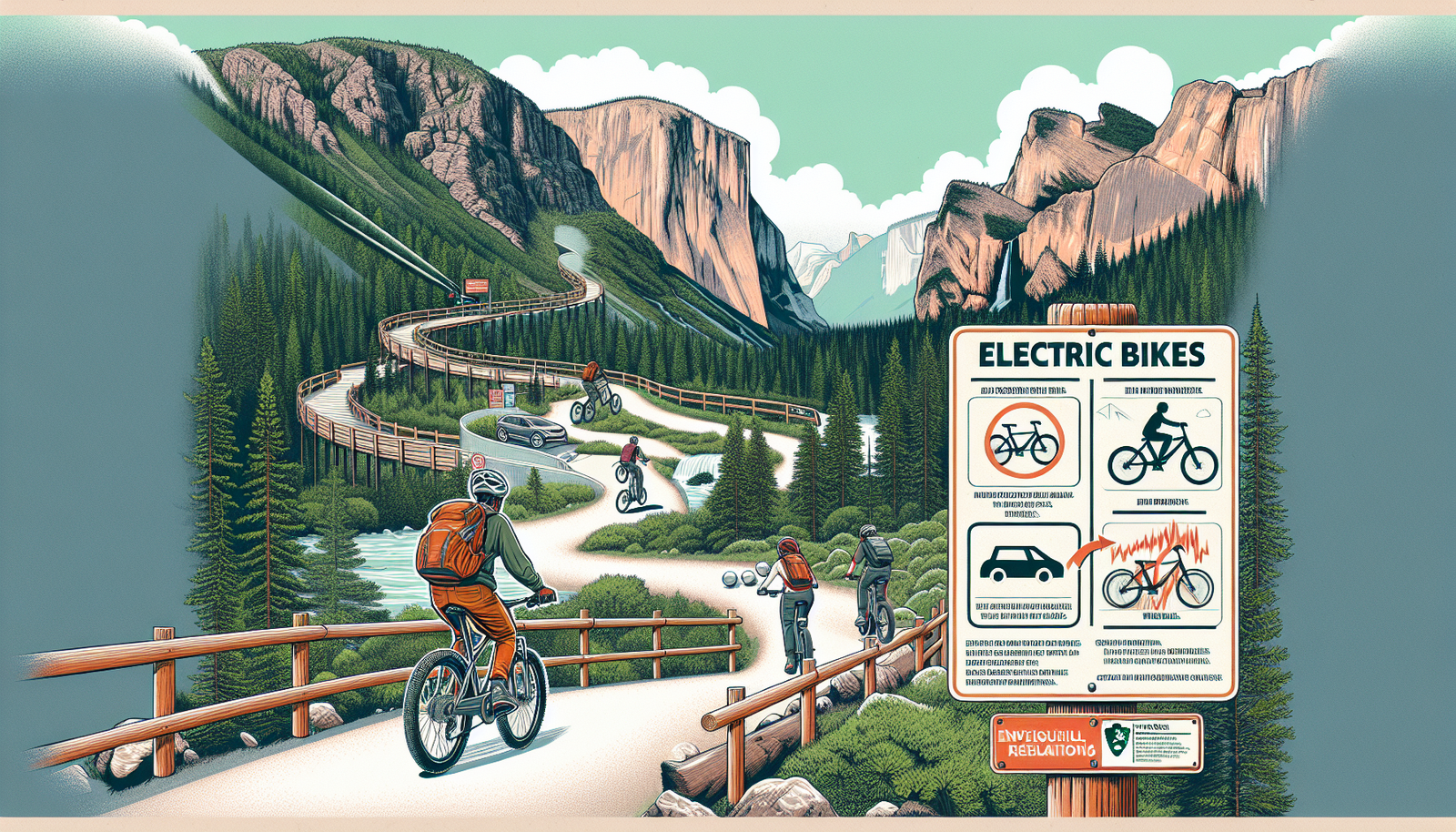Imagine exploring the beauty of national parks on an electric bike, effortlessly zipping along scenic bike trails amidst breathtaking views and abundant wildlife. But before you embark on this exciting adventure, you may wonder, “Can I ride an electric bike on bike trails in national parks?” This question has gained popularity as electric bikes become increasingly popular. In this article, we will explore the regulations and guidelines surrounding electric bike usage in national parks, ensuring a safe and enjoyable experience for all nature enthusiasts.
Understanding National Park Regulations
Different Types of Trails
National parks offer a variety of trails, each with its own designated use and classification. Some trails are specifically designed for hiking, while others allow for various recreational activities such as mountain biking or horseback riding. It is essential to understand the different types of trails within national parks to determine whether electric bikes are permitted.
Designated Use
National parks classify their trails based on their designated use. While some trails are exclusively for non-motorized activities, others allow for motorized vehicles such as electric bikes. The designated use of each trail is determined to ensure the safety of visitors and protect the park’s natural environment.
Trail Classifications
Trail classifications also play a crucial role in determining whether electric bikes are permitted on specific trails within national parks. Trails are generally classified based on their level of difficulty, ranging from easy and accessible to challenging and remote. Understanding the classification of a trail can help you determine if electric bike usage is allowed.
Electric Bike Classification
Traditional Bicycles
Traditional bicycles are entirely human-powered, requiring physical effort from the rider to propel the bike forward. They have been a popular mode of transportation and recreation for many years and are typically permitted on most non-motorized trails within national parks.
Electric Bicycles
Electric bicycles, also known as e-bikes, are equipped with an electric motor that assists the rider in pedaling. This motor provides an extra boost, helping riders cover larger distances or tackle challenging terrain with less physical exertion. However, the use of electric bicycles is subject to specific regulations, and their classification can vary depending on the park and trail policies.
Definitions and Distinctions
To determine whether electric bikes are allowed on bike trails in national parks, it is crucial to understand the definitions and distinctions between different types of e-bikes. The classification of e-bikes typically depends on factors such as maximum speed, motor power, and whether the bike requires pedaling to engage the motor. These distinctions help national parks establish guidelines and regulations regarding e-bike usage.

Impact on the Environment
Noise Pollution
One potential concern regarding electric bikes in national parks is noise pollution. While traditional bicycles are virtually silent, electric bikes emit a low-level hum due to their motorized components. This can disrupt the tranquility and natural soundscape of national parks, negatively impacting the visitor experience and wildlife habitats.
Wildlife Habitat
National parks are home to diverse ecosystems and a wide range of wildlife species. The increased presence of electric bikes on bike trails may disturb or disrupt the natural habitats of these animals. It is crucial to consider the potential impact on wildlife before allowing electric bike usage in sensitive areas.
Trail Erosion
Another environmental concern is the potential trail erosion caused by electric bikes. The added speed and power of e-bikes can contribute to accelerated wear and tear on the trails, leading to erosion and degradation of the natural landscape. To maintain the integrity of the trails and preserve the park’s natural beauty, careful consideration must be given to the impact of electric bike usage.
Benefits of Electric Bikes in National Parks
Accessibility
One significant benefit of allowing electric bikes on national park bike trails is increased accessibility. Electric bikes provide an opportunity for individuals with physical limitations or limited stamina to explore and enjoy the beauty of these natural wonders. The electric motor assists riders in pedaling, making it easier to navigate hilly or challenging terrains that may have otherwise been inaccessible.
Reduced Carbon Footprint
Electric bikes are a more environmentally friendly alternative to traditional modes of transportation. By utilizing electric power, these bikes emit fewer greenhouse gases and reduce the carbon footprint associated with transportation within national parks. Allowing electric bike usage can contribute to the park’s overall sustainability goals and conservation efforts.
Extended Range
The extended range offered by electric bikes can enable visitors to experience more of what national parks have to offer. The assistance provided by the electric motor allows riders to cover larger distances, explore more trails, and delve deeper into the park’s vast wilderness. This extended range can enhance the visitor experience and create more opportunities for adventure.

National Parks with Electric Bike-Friendly Policies
Yosemite National Park
Yosemite National Park has implemented electric bike-friendly policies, allowing visitors to explore designated bike paths and paved roads. However, it is essential to familiarize yourself with the specific guidelines and restrictions within the park, as motorized vehicles are not permitted on all trails.
Zion National Park
Zion National Park also permits electric bike usage on certain park roads and designated bike paths. Visitors can enjoy the scenic beauty of the park while riding electric bikes, taking advantage of the assistance provided by the motor to tackle the park’s elevations and diverse terrains.
Acadia National Park
Acadia National Park in Maine is another national park that has embraced electric bikes. The park’s extensive carriage road system offers an ideal setting for e-bike exploration. Riders can traverse the picturesque landscapes and historic roads while enjoying the benefits of electric bike assistance.
Controversies and Debates
Safety Concerns
One of the primary concerns surrounding electric bike usage in national parks is safety. The increased speed and power of e-bikes can pose risks, both to riders and other trail users. It is crucial to establish clear regulations and educate riders on responsible electric bike operation to mitigate potential safety hazards.
Conflict with Pedestrians and Non-Electric Bikers
Allowing electric bikes on bike trails can lead to potential conflicts with pedestrians and traditional cyclists. The speed differential between electric bikes and non-motorized trail users may create a safety issue. Clear signage, designated lanes, and awareness programs can help prevent clashes and ensure a harmonious coexistence among all trail users.
Maintaining Trail Integrity
Trails within national parks are carefully maintained to preserve their natural beauty and minimize the impact on the environment. Allowing electric bike usage on these trails may pose challenges in terms of trail maintenance and preservation. Regular assessments and adaptive management strategies can help ensure the long-term integrity and sustainability of the trails.

Current Regulations on Electric Bike Usage
Federal Regulations
The regulation of electric bike usage within national parks falls under the jurisdiction of federal agencies such as the National Park Service. While the regulations can vary from park to park, the federal guidelines provide a framework for managing electric bike access and ensuring the protection of natural resources and visitor safety.
State and Local Regulations
In addition to federal regulations, state and local authorities may also have their own rules regarding electric bike usage within national parks. It is crucial to be aware of and adhere to these regulations to avoid any legal consequences or negative impacts on the natural environment.
Temporary Bans
In some cases, national parks may introduce temporary bans or restrictions on electric bike usage. These temporary measures are often implemented to assess the impact of e-bikes on the park’s trails and natural resources. It is essential to stay updated on any temporary bans or changes to regulations that may affect your e-bike usage within national parks.
Advocacy and Support
Organizations Supporting Electric Bike Access
Several organizations advocate for the inclusion of electric bikes in national parks. Their primary focus is to promote access to these pristine natural locations while ensuring responsible and sustainable electric bike usage. These advocacy groups work closely with park management and government agencies to develop comprehensive policies that balance accessibility with environmental protection.
Collaborative Efforts
Collaboration between electric bike enthusiasts and national park management is key to finding common ground regarding electric bike access. By fostering open and ongoing communication, park authorities can gain valuable insights from e-bike users and develop regulations that address concerns while maximizing the benefits of electric bikes within national parks.

Conclusion and Future Outlook
As the popularity of electric bikes continues to grow, the debate regarding their usage in national parks will persist. Finding a balance between accessibility and environmental preservation is crucial to ensure the long-term sustainability of these natural treasures. With careful regulation, education, and collaboration, electric bikes can provide an inclusive and eco-friendly mode of transportation within national parks, allowing visitors to experience the beauty of these protected areas while minimizing their impact on the environment.

